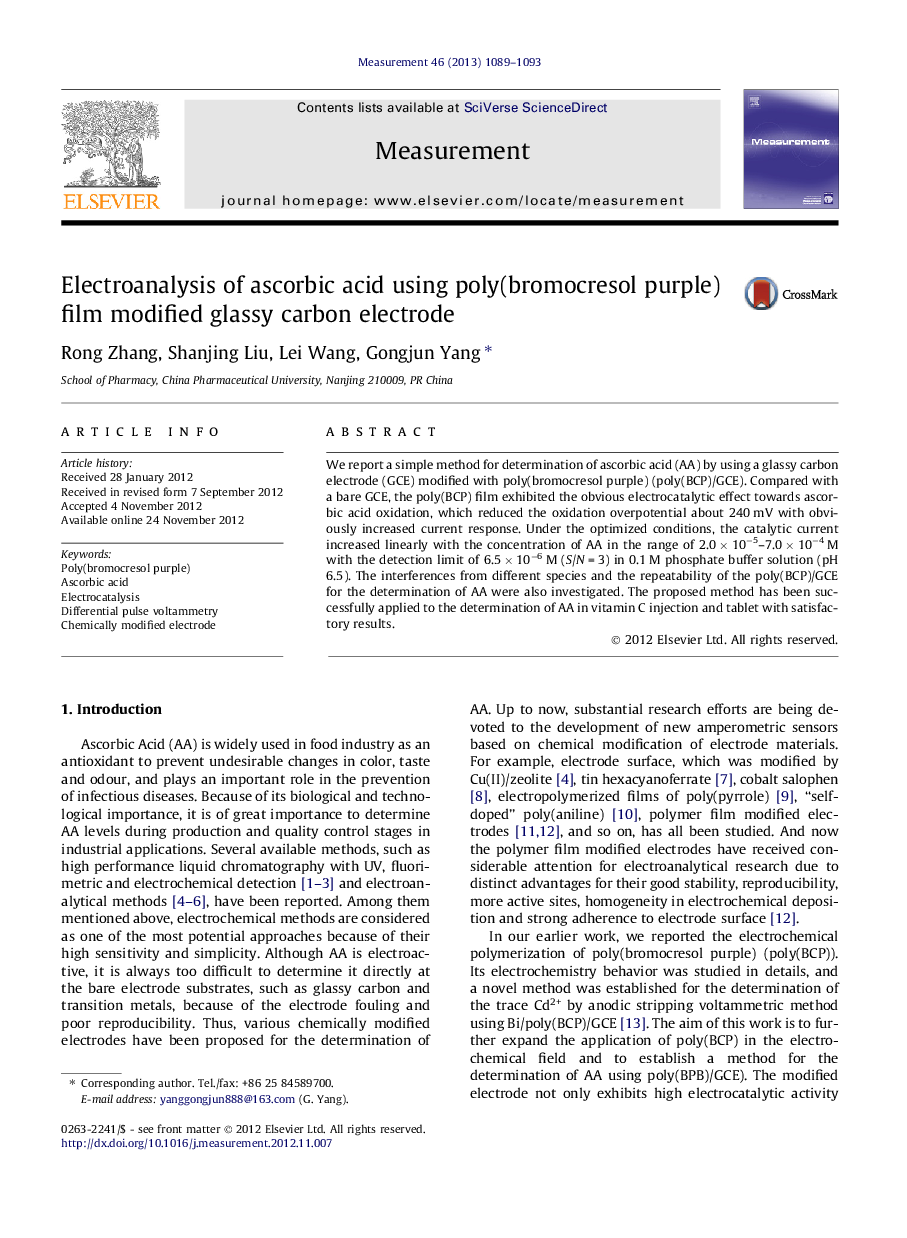| Article ID | Journal | Published Year | Pages | File Type |
|---|---|---|---|---|
| 727451 | Measurement | 2013 | 5 Pages |
We report a simple method for determination of ascorbic acid (AA) by using a glassy carbon electrode (GCE) modified with poly(bromocresol purple) (poly(BCP)/GCE). Compared with a bare GCE, the poly(BCP) film exhibited the obvious electrocatalytic effect towards ascorbic acid oxidation, which reduced the oxidation overpotential about 240 mV with obviously increased current response. Under the optimized conditions, the catalytic current increased linearly with the concentration of AA in the range of 2.0 × 10−5–7.0 × 10−4 M with the detection limit of 6.5 × 10−6 M (S/N = 3) in 0.1 M phosphate buffer solution (pH 6.5). The interferences from different species and the repeatability of the poly(BCP)/GCE for the determination of AA were also investigated. The proposed method has been successfully applied to the determination of AA in vitamin C injection and tablet with satisfactory results.
Graphical abstractElectrocatalytic oxidation reaction of AA at the poly(BCP)/GCE.Figure optionsDownload full-size imageDownload as PowerPoint slideHighlights► Poly(BCP) exhibited the obvious electrocatalytic effect towards AA oxidation. ► The electrochemical method for determining AA was established. ► This method successfully applied for determination of AA in injection and tablet. ► The result was in agreement with that obtained by the method in China Pharmacopoeia. ► It would further expand the application of poly(BCP) in the electrochemical field.
